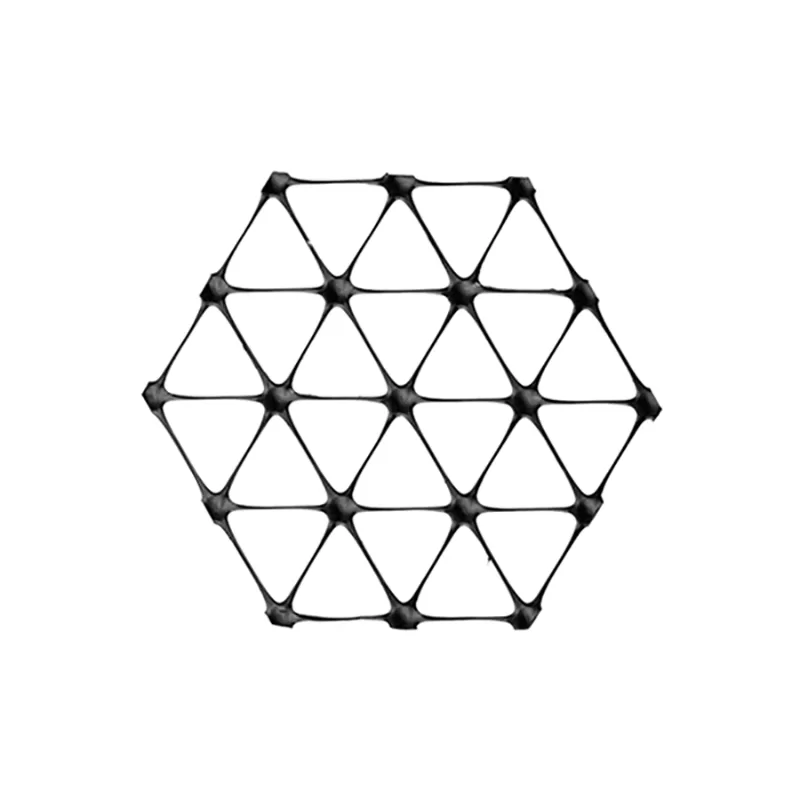+86-159 9860 6917
info@geofantex.com
geofantex@gmail.com
+86-400-8266163-44899
Synteen geogrids are innovative geosynthetic materials designed to enhance soil stability and support various construction applications. With their unique structure and engineering capabilities, these geogrids play a crucial role in improving the performance and longevity of infrastructure projects, such as roads, retaining walls, and foundations. This article explores the key aspects of Synteen geogrids, addressing common questions about their types, differences from geonets, purpose, and properties.
What are the three types of geogrids?
Geogrids can be classified into three primary types:
- Uniaxial Geogrids: These are designed to provide strength in one direction, making them ideal for applications such as retaining walls and slope stabilization. They can also be found in Uniaxial, Biaxial, Triaxial (Triax®), and Geogrid-Geotextile Composites, enhancing their functionality.
- Biaxial Geogrids: These offer strength in two directions, which makes them suitable for applications like base reinforcement for roads and parking lots. Incorporating elements like Uniaxial, Biaxial, Triaxial (Triax®) and Geogrid-Geotextile Composites can further improve their performance.
- Triaxial Geogrids: These provide enhanced stability through a three-dimensional structure, allowing for better load distribution. They are typically used in high-stress applications, such as heavy traffic areas, where the addition of Uniaxial, Biaxial, Triaxial (Triax®), and geogrid Geogrid-Geotextile Composites can offer significant advantages.

What is the difference between geogrids and geonets?
Here’s a revised version of your paragraphs with the requested integration:
While both geogrids and geonets are used in civil engineering, they serve different purposes.
Geogrids are primarily designed for soil reinforcement and stabilization. Their structure helps distribute loads across a larger area, which increases the overall strength of the soil.
Geonets, which are relatively thin, planar geosynthetics used for drainage applications, consist of a network of interconnected strands that allow for the efficient flow of water and gases. This makes them ideal for applications such as landfill caps and drainage layers. In contrast, pipes are buried plastic pipes also used for drainage, offering a different solution for managing water flow in various environments.
What is the purpose of geogrid?
The primary purpose of geogrids is to enhance soil stability and load-bearing capacity to reinforce soils and similar materials. By interlocking with soil particles, geogrids create a composite material that can withstand significant stresses. This leads to improved performance in various applications, including:
- Reducing settlement and deformation in roadways
- Preventing soil erosion in slopes and embankments
- Supporting retaining walls to ensure structural integrity
What are the properties of geogrids?
Synteen geogrids possess several important properties that contribute to their effectiveness:
- High Tensile Strength: They are extremely strong in tension and can withstand significant loads without breaking, ensuring long-lasting performance.
- Durability: Made from materials resistant to environmental degradation, Synteen geogrids maintain their functionality over time.
- Lightweight: Their low weight makes them easy to handle and install, reducing labor costs.
- Permeability: Many geogrids allow for water drainage, which helps prevent issues related to water accumulation and pressure build-up.
Synteen geogrids are a vital component in modern civil engineering, offering solutions for soil stabilization, erosion control, and load distribution. Understanding the different types of geogrids, their unique properties, and their purpose helps engineers and construction professionals make informed decisions for various projects. As infrastructure demands grow, the use of advanced materials like Synteen geogrids will continue to play an essential role in creating sustainable and resilient structures.



Get Free Sample
We’ll respond as soon as possible(within 12 hours)






















